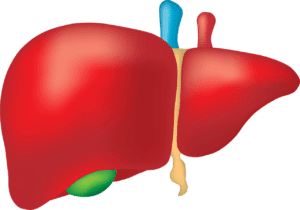Bile Duct Cancer
What is bile duct cancer?
Also referred to as cholangiocarcinoma, bile duct cancer is a form of cancer that begins in the tubes that connect the liver to the gallbladder and small intestine to carry bile. There are numerous forms of this cancer based on where exactly it begins. They are:
- Intrahepatic: develops in the part of the bile ducts within the liver
- Distal: occurs in the part of the ducts closest to the small intestine
- Hilar: happens in the part of the ducts right outside of the liver
What are the symptoms of bile duct cancer?
Symptoms include:
- Pain in the abdomen
- Fatigue
- Itchy skin
- Jaundice
- White-colored stool
- Unintentional weight loss
What causes bile duct cancer?
Medical professionals are unsure of the cause of the genetic mutations that lead the cells of the bile duct to multiply and divide out of control into a tumor. However, they have identified a number of risk factors, such as being over age 50, primary sclerosing cholangitis, congenital bile duct issues, smoking, having a liver parasite, and chronic liver disease.
How is bile duct cancer diagnosed?
Doctors may suspect cholangiocarcinoma based on a number of symptoms, and they will evaluate further with various tests. Liver function tests, endoscopic retrograde cholangiopancreatography, tumor marker tests, imaging tests, and biopsy.
What are the treatments for bile duct cancer?
These tumors can be difficult to treat, but there are multiple treatment options, such as a liver transplant, chemotherapy, photodynamic therapy, surgery, radiation therapy, and biliary drainage. Clinical trials may be another option.
Where can I find out more about bile duct cancer?
Bile Duct Cancer Articles


NXP800 for Cholangiocarcinoma Earns Orphan Drug Designation


A Glimmer of Hope for Patients with Advanced Biliary Tract Cancer

ZB131 for Cholangiocarcinoma Earns Orphan Drug Designation

Nelson is Running the Boston Marathon in Honor of His Brother, Who Died From Cholangiocarcinoma

Phase 3 Global Trial for Cholangiocarcinoma Testing a Single Agent is Well Underway







